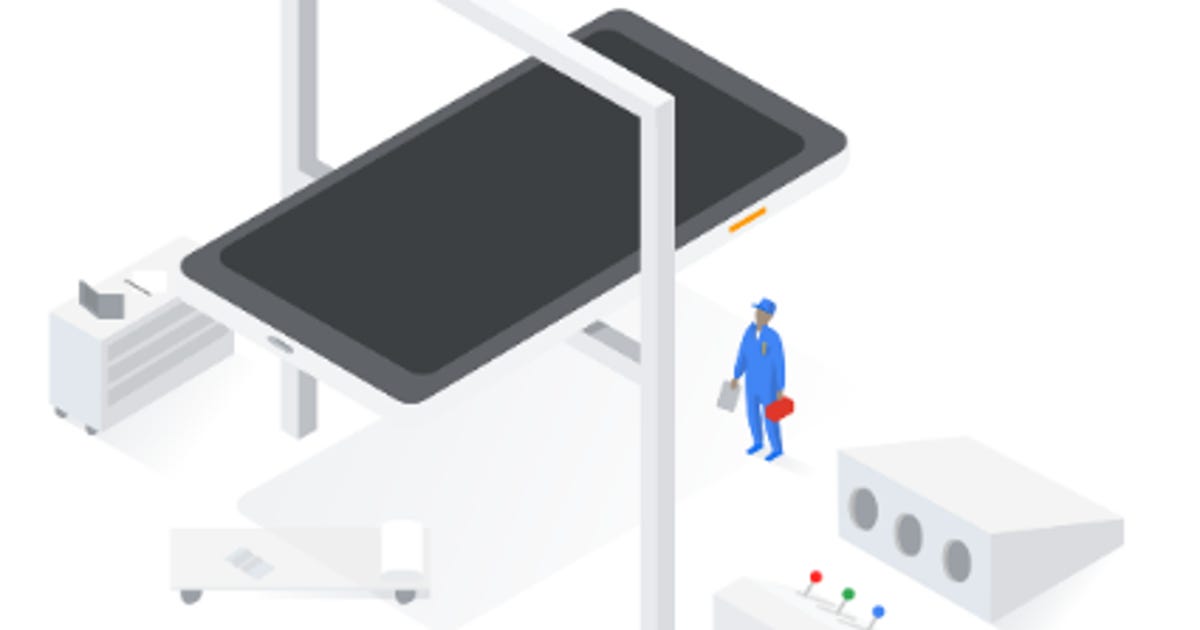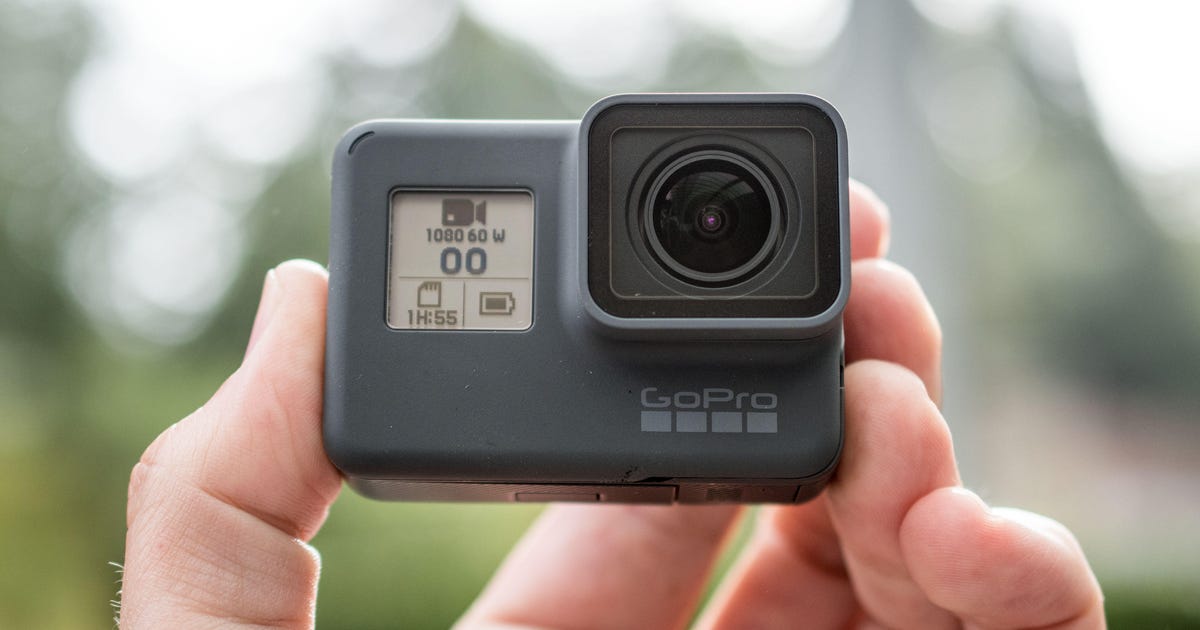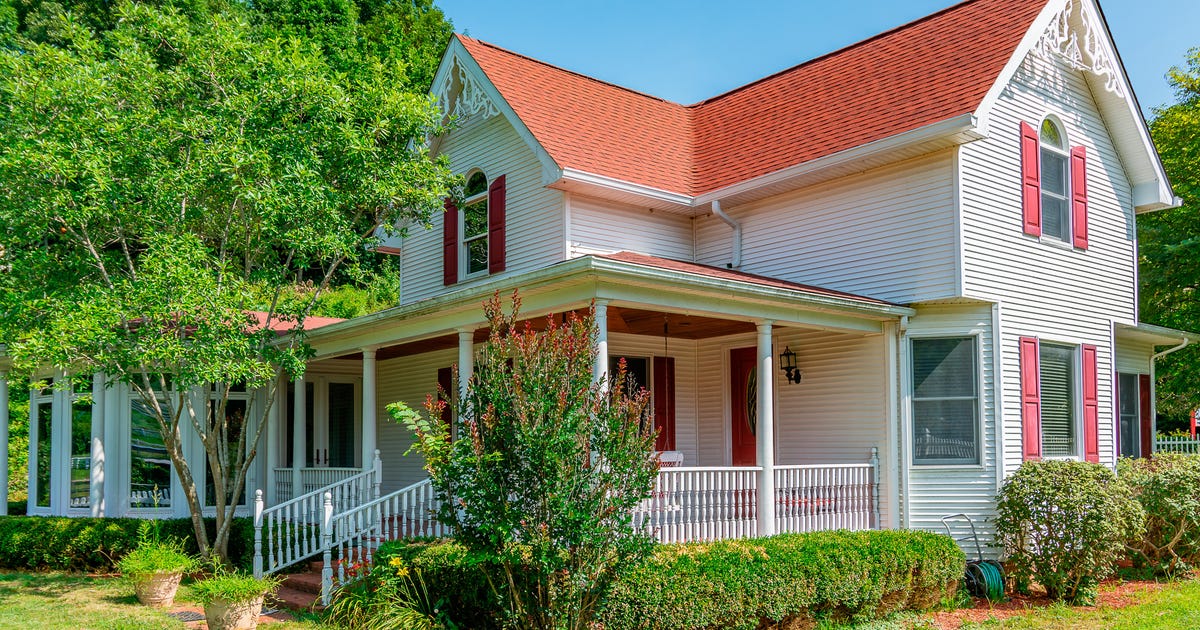
Asus Zenfone 7 Pro is a flipping cool phone, but you'll have to pay for it
Like
- Flipping camera
- Uninterrupted display
- Long lasting battery
- Refresh rates
Don't Like
- Not water resistant
- Phone gets hot
- No support for wireless charging
- Steep increase in price
More than a year after Asus impressed with a flipping camera on its flagship Zenfone 6, the company is back with the Zenfone 7 Pro. The phone's standout feature is a swiveling camera that smoothly flips over the top of the phone to take selfies. It also sports a large uninterrupted display, 5G connectivity, a blazing-fast processor, fast refresh rates and a massive battery. Alongside the 7 Pro, Asus launched a base variant called the Zenfone 7.
With these updated features, Asus bumped up prices significantly from the $499 Zenfone 6 to levels that are tough to justify. The higher-end Zenfone 7 Pro (the phone I received for review) costs approximately $960 (roughly £715 or AU$1,290) when converted from euros, whereas the Zenfone 7 starts at around $840 (about £625 or AU$1,130). Although the Zenfone 7 Pro comes with improved features like Qualcomm's most advanced chipset and a better flip camera, you aren't getting the value for money that made the Zenfone 6 such an excellent purchase.
The phone comes with some drawbacks too. For example, it's not water resistant and there's no support for wireless charging. Plus the phone can get uncomfortably hot when charging or performing demanding tasks. If you're dead-set on showing off a flip-camera phone to your friends, then I'd recommend going for the more affordable Zenfone 7. The former looks identical to the 7 Pro and serves up most of its core features, but has less storage (128 GB versus 256GB), a different chipset (Snapdragon 865 versus Snapdragon 865 Plus) and no optical image stabilization in the camera. Meanwhile, the Zenfone 6's launch price was $499. If an IP rating is important to you, the OnePlus 8 Pro is a good Android alternative within a similar price bracket.
Unfortunately, Asus doesn't currently have plans to officially rollout the phone in the US. But the Zenfone 7 and Zenfone 7 Pro are expected to be released in parts of Europe in late September for 699 euros and 799 euros respectively, so they'll be reasonably easy to import.
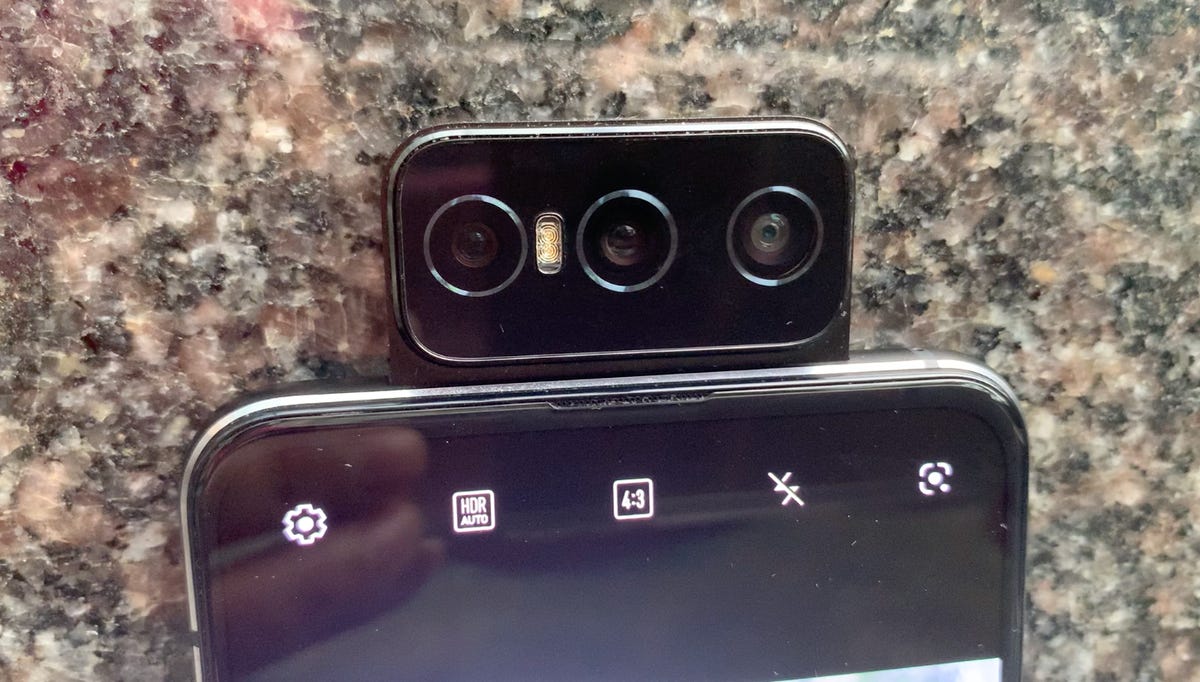
Asus added a third telephoto lens to the Zenfone 7 and 7 Pro (pictured here).
Sareena Dayaram/CNETAsus doubles down on that flip camera
Since the flip camera influences many parts of the Zenfone 7 Pro's aesthetic, it's difficult to talk about design without first addressing its most distinctive physical feature. The camera unit is composed of three lenses that flip from back to front over the top of the phone (and vice versa) with a click of a button. This allows you to use its higher resolution cameras, which are normally reserved for the back of the phone, as front-facing shooters. Because of this, Asus eliminated the front camera altogether and as a result delivered a completely uninterrupted display, free of any notches or cut-outs that would typically house a lens.
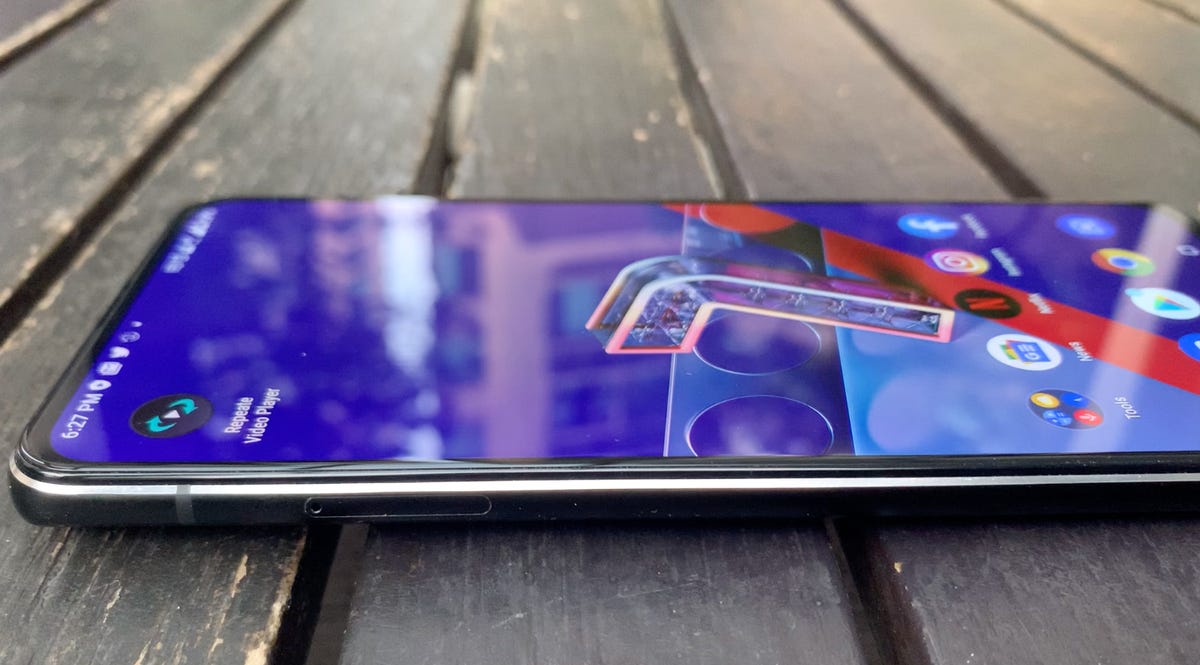
Like its predecessor, the Zenfone 7 Pro has a notch-less display.
Sareena Dayaram/CNETFor the Zenfone 7 phones, Asus upgraded the flip-cameras's motor from the Zenfone 6, to one that it says is smoother, more durable and more versatile due to the addition of a new angle sensor. The company says the flip-cam can endure 200,000 flips, lasting you about five years or twice as long as the Zenfone 6. In the week or so that I've spent with this phone, I've had fun using the flip camera. I think it's a creative, clever and well-thought out solution that actually integrates with useful features. But, despite Asus' claims, I worry the constant emerging and re-emerging of the camera unit may make it prone to more wear and tear. For its part, Asus has added an auto-retract protection feature to its flip camera, which can sense when the handset is in a freefall. I tested this by dropping it on to a bed from a height of approximately four feet and can confirm it works.

The Zenfone 7 Pro is bulky, but has a great screen
Apart from the avant-garde flip camera setup, the sheer size and weight of the Zenfone 7 Pro was the next thing I noticed about it. It's one of the heaviest phones I've used and I often found myself navigating it with two hands. The phone I was given for review was entirely black except for the back which featured a dark green sheen. Overall, the color scheme was a bit too dark for my taste, but I can see why people would appreciate this finish. (The bundled charger and cable are black too.) On the right side of the handset, there are two buttons, namely, a volume control fingerprint reader that doubles up as a power button, which can be customised. The side fingerprint worked seamlessly and was easy to get accustomed to, but I do prefer an in-display reader.
The Zenfone 7 Pro features a 6.67-inch AMOLED display with speedy 90Hz refresh rates. Most phones have a 60Hz display, which means the screen refreshes 60 times a second. But it's not as high as the 120Hz screens on the OnePlus 8 Pro and Galaxy S20. With the faster screen, the animations look smoother, while text and images are crisper. The phone runs on Android 10 out of the box and has a customized skin known as Zen UI. It reminds me of stock Android, but overall I found it clean, simple and easy to navigate.
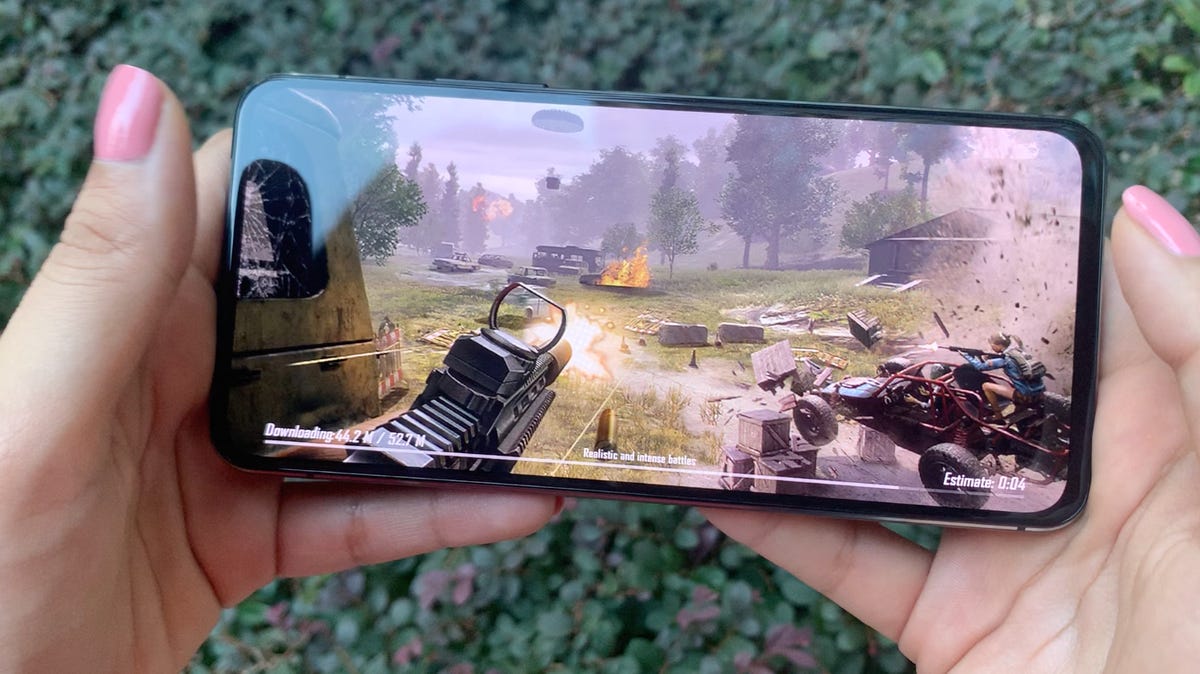
The Zenfone 7 Pro's three cameras
This camera took sharp and vibrant pictures in the sunlight and even in overcast weather conditions. Low light imaging was mostly good too and it did well brightening up some environments, especially when I used Night Mode. At times, however, pictures looked slightly artificially sharpened.
Out of the Zenfone 7 Pro's tri-camera module, it's the telephoto lens that is a new addition. It allows for 3x optical zoom and up to 12x digital zoom. At this level, pictures were blurry and grainy. If you intend on using zoom to capture details of faraway subjects, you won't achieve that with this phone, unfortunately. At 3x optical zoom, photos look crisp in sunny conditions, but tended to look grainy in trickier lighting environments. Overall, this camera definitely wasn't best-in-class, but then again this phone appeals to people who want a flipping camera and not necessarily the best camera.
As for video, there was support for up to 8K video at 30 frames per second with EIS. It makes for massive file sizes and isn't a video feature I expect to use much. But thanks to the flip cam, you have the option of making use of this high-tech feature from the phone's front.

Example of ultra-wide shot taken in daylight.
Sareena Dayaram/CNET
Taken on default settings.
Sareena Dayaram/CNET
Example of 3x optical zoom. The photo turned out crisp, vibrant, and true-to-life.
Sareena Dayaram/CNET
This photograph was captured using the Zenfone 7 Pro's dedicated night mode setting. You can see that it's been brightened compared to the photo below that was taken without night mode.
Sareena Dayaram/CNET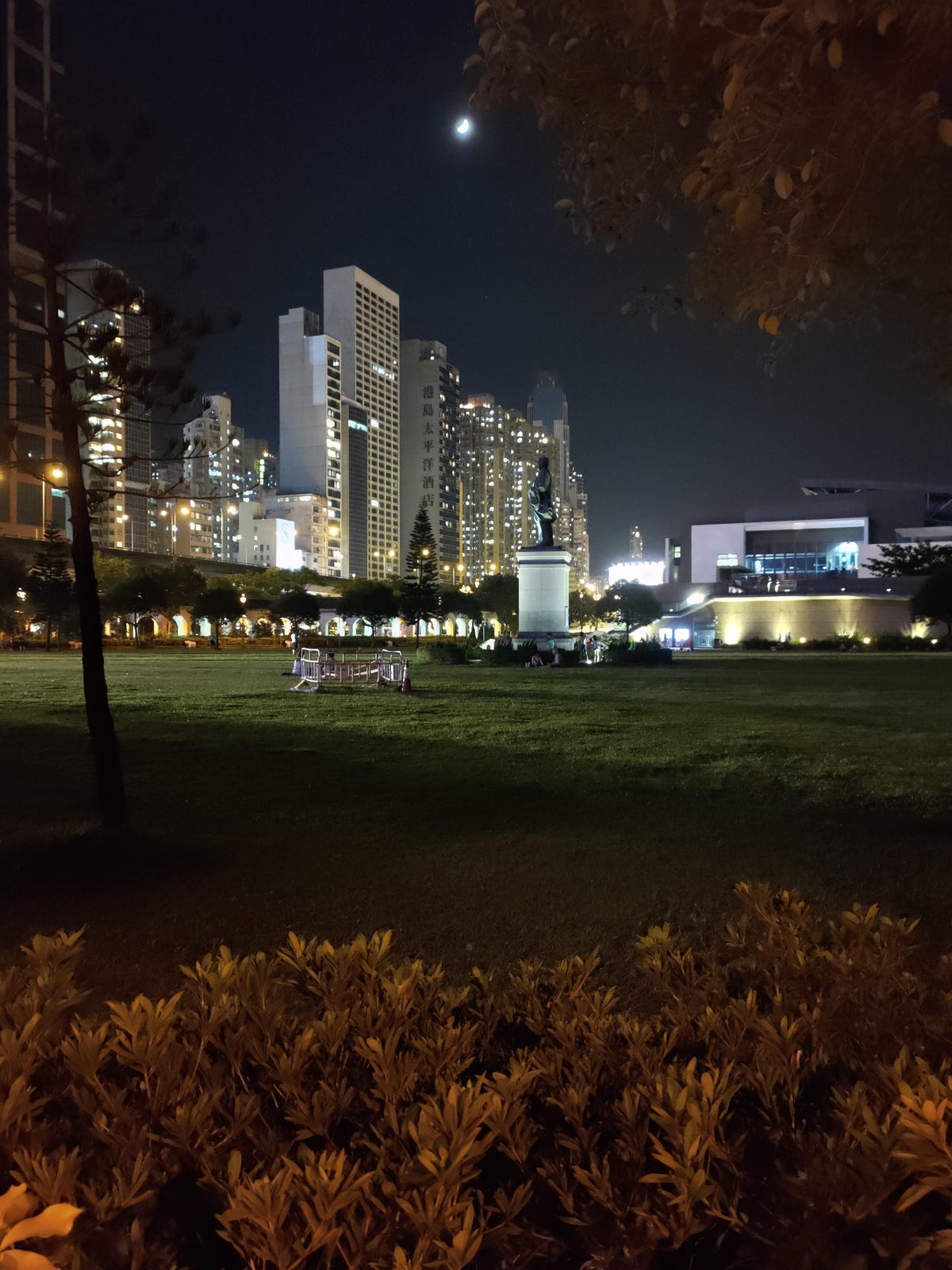

Taken indoors with natural light pouring through the window. The camera did a good job of taking a detailed and color-accurate photo.
Sareena Dayaram/CNET
The Zenfone 7 Pro's 5,000-mah battery lasts well
Asus prides itself on the "unbeatable endurance" of its Zenfone batteries, so I was looking forward to experiencing its seemingly endless battery life and it didn't disappoint. It lasted me nearly 23 hours with what I would describe as moderate usage. Meaning I used my phone for about an hour of Zoom video calls, WhatsApp messaging, reading news on various social media apps and taking some photos. When I went to bed, I muted the phone and didn't switch on airplane mode, which would have preserved battery life even more. Also, when I continuously played an HD video on Airplane mode for battery tests, the phone lasted for more than 15 hours at 50% brightness.
When the battery did finally run out, it managed to hit a 50 percent charge in 30 minutes and get fully revitalized in 100 minutes or so, which is slightly longer than the quoted 93 minutes. Like the Zenfone 6, Asus decided to stick with a massive 5,000-mAh battery for the Zenfone 7 series. Though the capacity didn't increase with the new iteration, it added more battery-care features and a faster 30-watt charger. What really stood out was the degree of customization Asus provided in terms of battery-care features and charging. One new feature is the option to enable always slow charging, which the company says helps preserve battery capacity in the long run. Another example was the upper limit charging feature, which allows you to limit how much you charge your battery, say to 90% instead of the full hundred. Again, Asus says that's because regularly hitting a 100% charge degrades battery capacity over time.
At the heart of the Zenfone 7 Pro is the new Snapdragon 865 Plus processor, which is supposed to be 10% faster than the 865 processor found on most premium Android phones. In my experience, it was extremely snappy and totally capable. Nothing got in its way. Other fancy phones that use this processor include Samsung's pricier Galaxy Note 20, Note 20 Ultra and Oppo's Find X2 and Find X2 Pro. The Zenfone 7 Pro is backed up by 8GB RAM and 256GB of internal storage, and held up extremely well in benchmark tests.
Zenfone 7 vs. Zenfone 7 Pro
| | Asus Zenfone 7 | Asus Zenfone 7 Pro |
|---|---|---|
| Display size, resolution | 6.67-inch AMOLED; FHD | 6.67-inch AMOLED; FHD |
| Dimensions (Inches) | 6.49 x 3.04 x 0.37 inches | 6.49 x 3.04 x 0.37 inches |
| Dimensions (Millimeters) | 165.08 x 77.28 x 9.6 mm | 165.08 x 77.28 x 9.6 mm |
| Weight (Ounces, Grams) | 8.11 oz; 230g | 8.11 oz; 230g |
| Mobile software | Android 10 | Android 10 |
| Camera | 64-megapixel (main camera), 12-megapixel (ultra-wide), and (telephoto) | 64-megapixel (main camera), 12-megapixel (ultra-wide), and (telephoto) |
| Front-facing camera | None | None |
| Video capture | 8K | 8K |
| Processor | Snapdragon 865 | Snapdragon 865 Plus 5G |
| Storage | 128GB | 256GB |
| RAM | 6GB/8GB | 8GB |
| Expandable storage | up to 2TB microSD card | up to 2TB microSD card |
| Battery | 5,000 mAh | 5,000 mAh |
| Fingerprint sensor | Side | Side |
| Connector | USB-C | USB-C |
| Headphone jack | None | None |
| Special features | Flip camera, 5G enabled, 90Hz refresh rate, 30W charging | Flip camera, 5G enabled, 30W charging, 90Hz refresh rate |
| Price off-contract (USD) | $840 (converted from 699 euros) | $960 (converted from 799 euros) |
| Price (GBP) | £625 (converted from euros) | £715 (converted from euros) |
| Price (AUD) | AU$1,130 (converted from euros) | AU$1,290 (converted from euros) |
First published Sept. 1.
Source
